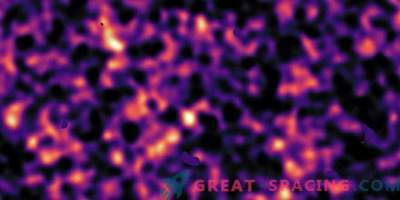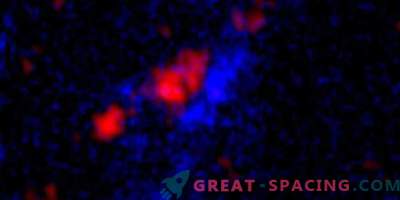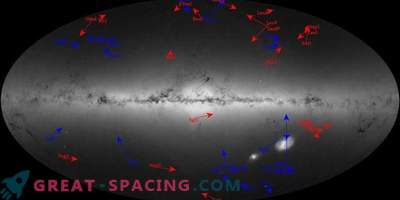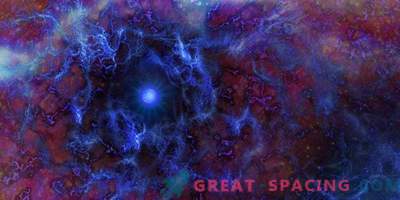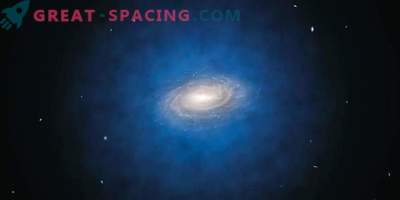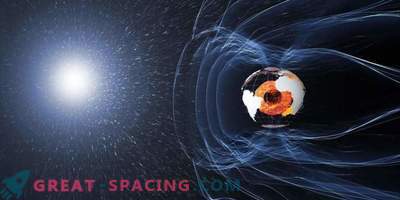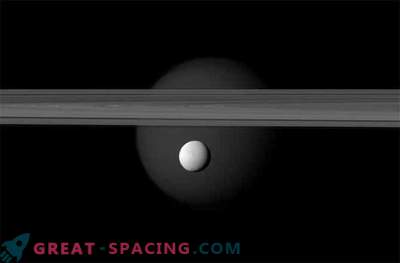
The birth of stars in tiny dwarf galaxies can slowly “heat up” dark matter, pushing it out. The left shows the density of the gaseous hydrogen of the simulated dwarf galaxy. On the right - the same for a real dwarf galaxy IC 1613. In the model, the repeated inflow and outflow of gas causes fluctuations in the gravitational field intensity in the galactic center. Dark matter reacts to this by moving from the center
Scientists have found evidence that dark matter is able to heat up and move during the birth of stars in galaxies. The new data provide the first observational evidence of the effect of “heating up dark matter” and offer clues to what dark matter consists of.
In the new work, the researchers decided to concentrate on the nearest dwarf galaxies. These are small faint galaxies that usually surround large ones, like the Milky Way. They can hide tips that will help better understand the nature of dark matter.
It is believed that dark matter makes up most of the mass of the universe. But, since it does not contact with light, like normal matter, it can only be observed due to gravitational effects. Perhaps a clue to understanding nature will be how stars form in these galaxies. At the birth of stars, a strong wind can push gas and dust away from the galactic center. As a result, the center is endowed with a smaller mass, which affects how much gravity is felt by the remaining dark matter. With less gravitational attraction, dark matter gains energy and moves away from the center. This effect is called the process of heating dark matter.
Astrophysicists measured the amount of dark matter in the centers of 16 dwarf galaxies with different stellar birth histories. It turned out that galaxies that had long ceased to create new stars had a higher density of dark matter in the centers. This confirms the theory that more ancient galaxies heated dark matter less.
The obtained information sets a new restriction on dark matter models: it should be able to form dwarf galaxies with a range of central densities that correspond to the number of star formations. Scientists hope to expand the work by measuring the density of central dark matter in a larger sample of dwarf galaxies.



